 |
 |
 |
| |
HCC Rates Predicted Black Disparities Widening 33% by 2028 USA
|
| |
| |
CHANGES IN LIVER DISEASE ETIOLOGY AND RACIAL ETHNIC MAKE-UP OF PERSONS WITH HEPATOCELLULAR CARCINOMA IN THE UNITED STATES: A MODELING STUDY BASED ON THE SEER-MEDICARE DATABASE
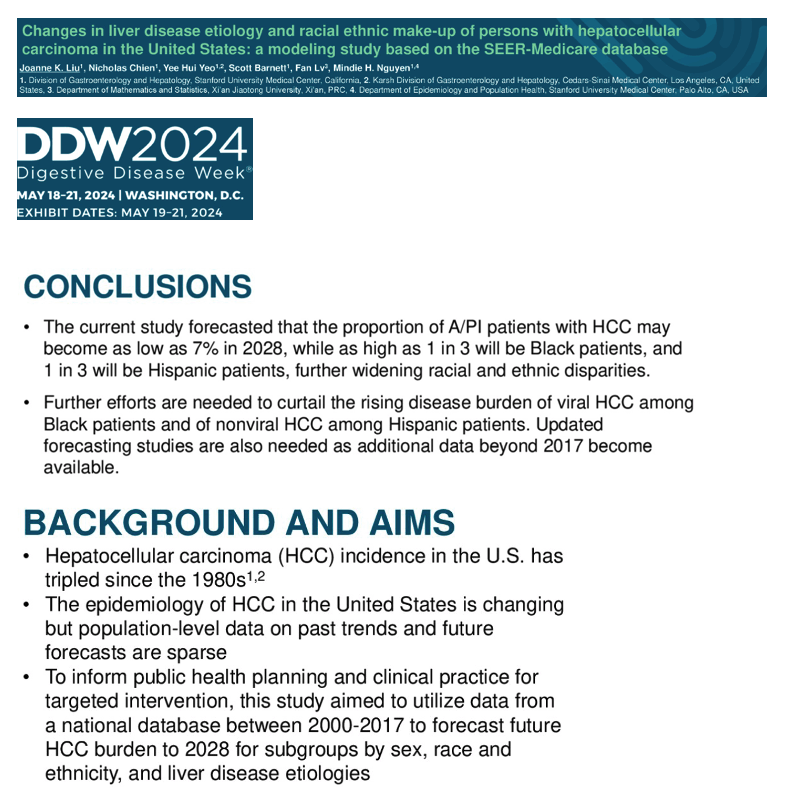
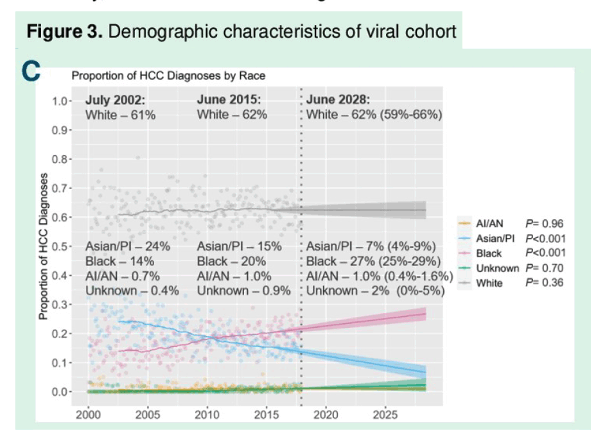
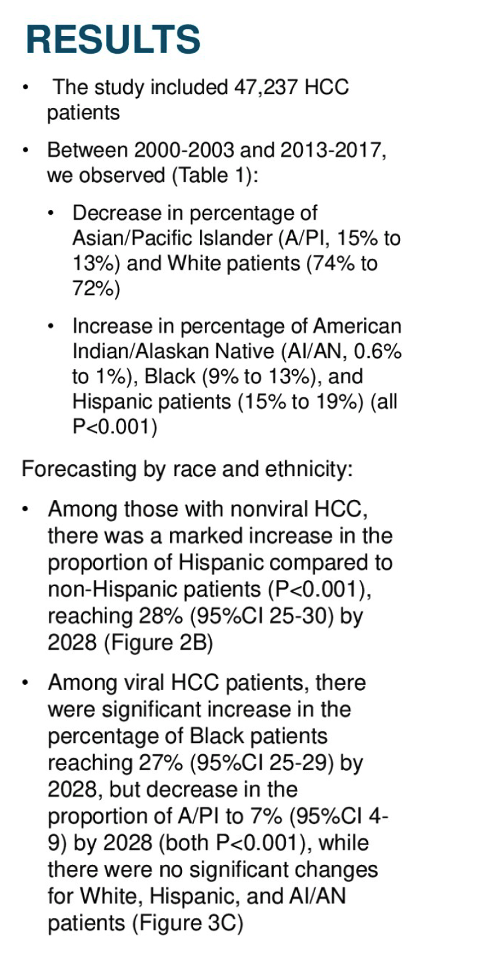
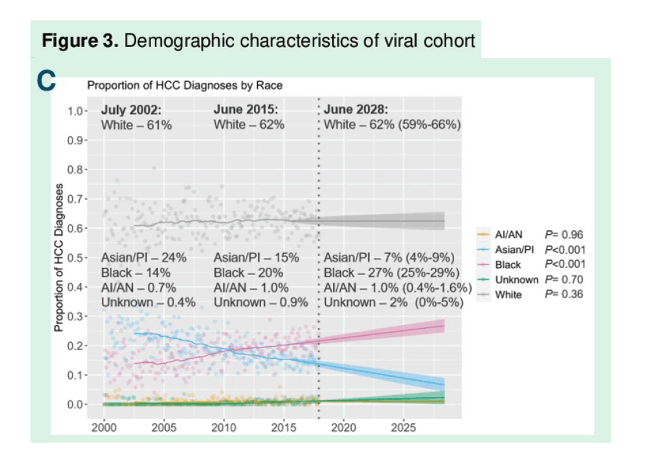
ABSTRACT>
Background: The epidemiology of hepatocellular carcinoma (HCC) in the United States is changing but population-level data on past trends and future forecasts are sparse. To inform public health planning and clinical practice for targeted intervention, this study aimed to utilize data from a national database between 2000-2017 to forecast future HCC burden to 2030 for subgroups by sex, race and ethnicity, and liver disease etiologies.
Methods: We performed a retrospective cohort study of adult HCC patients using the SEER Medicare database (2000-2017). We excluded patients with a non-liver cancer or with HIV infection. We used autoregressive integrated moving average (ARIMA) to model changes in the demographic characteristics of patients from 2000-2017 and applied this model to describe the future HCC population through 2030. Trends were compared between patients with viral (hepatitis B and/or C) and nonviral liver disease (alcohol-associated and nonalcoholic fatty liver disease, and other liver diseases).>
Results: The study included 47,237 HCC patients. Males were the majority, with increasing percentage from 69% in 2000-2003 to 73% in 2013-2017 (P<0.001). Between the same time periods, the percentage of Asian/Pacific Islander (A/PI) and White patients decreased from 15% to 13% and 74% to 72%, respectively, while the percentage increased for American Indian/Alaskan Native (AI/AN, 0.6% to 1%), Black (9% to 13%), and Hispanic patients (15% to 19%) (all P<0.001). Fitting these trends to ARIMA models showed an increase in the proportion of males among HCC patients with viral (P=0.002) as well as those with nonviral (P=0.063) liver disease to 79% (95%CI 76-83) and 78% (95%CI 74-81) in 2030, respectively (Figure 1A/B). By race and ethnicity (Figures 2A-D), among viral HCC patients, there were significant increase in the percentage of Black patients reaching 28% (95%CI 25-30) by 2030 but decrease in the proportion of A/PI to 5% (95%CI 3-8) by 2030 (both P<0.001), while there were no significant changes for White, Hispanic, and AI/AN patients. In contrast, among those with nonviral HCC, there was a marked increase in the proportion of Hispanic compared to non-Hispanic patients (P<0.001), reaching 28% (95%CI 26-29) by 2030.
Conclusion: The current study forecasted that the proportion of A/PI patients with HCC may become as low as 5% in 2020, while as high as 1 in 3 will be Black patients, and 1 in 3 will be Hispanic patients, further widening racial and ethnic disparities. Further efforts are needed to curtail the rising disease burden of viral HCC among Black patients and of nonviral HCC among Hispanic patients. Updated forecasting studies are also needed as additional data beyond 2017 become available.
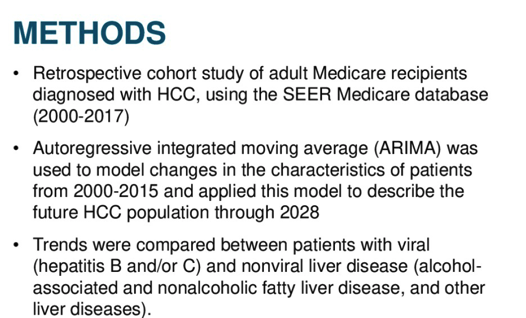
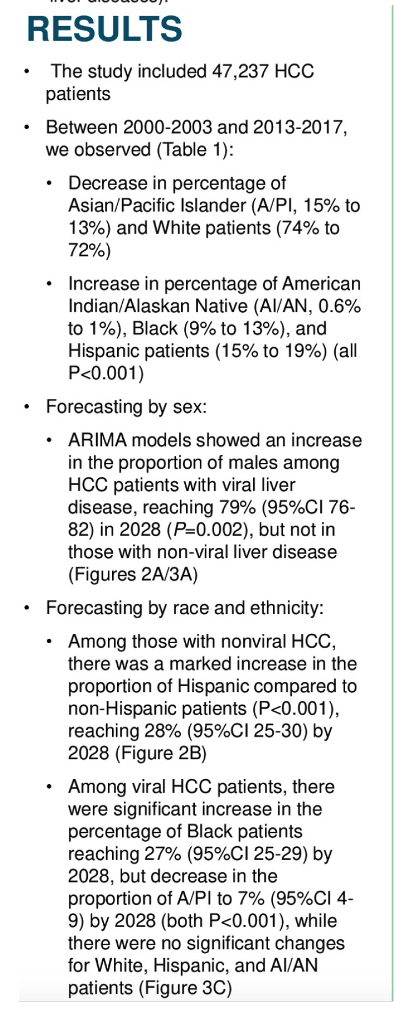
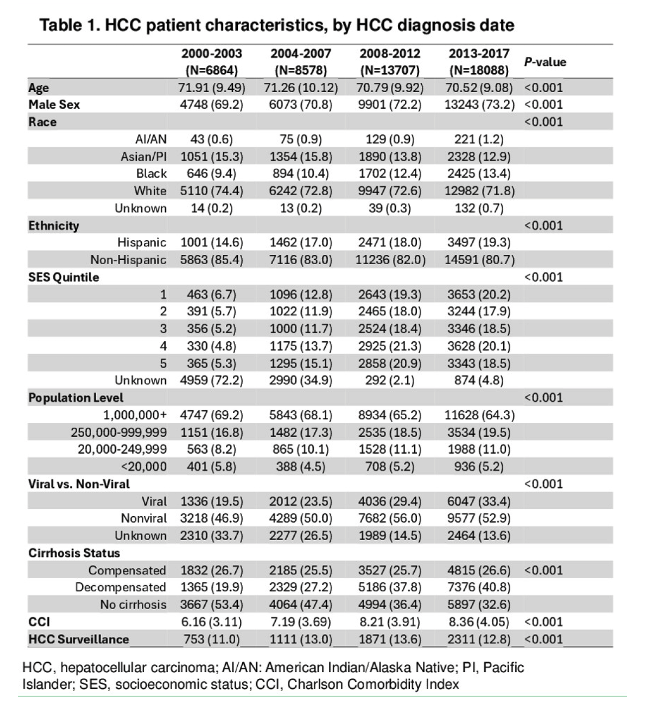
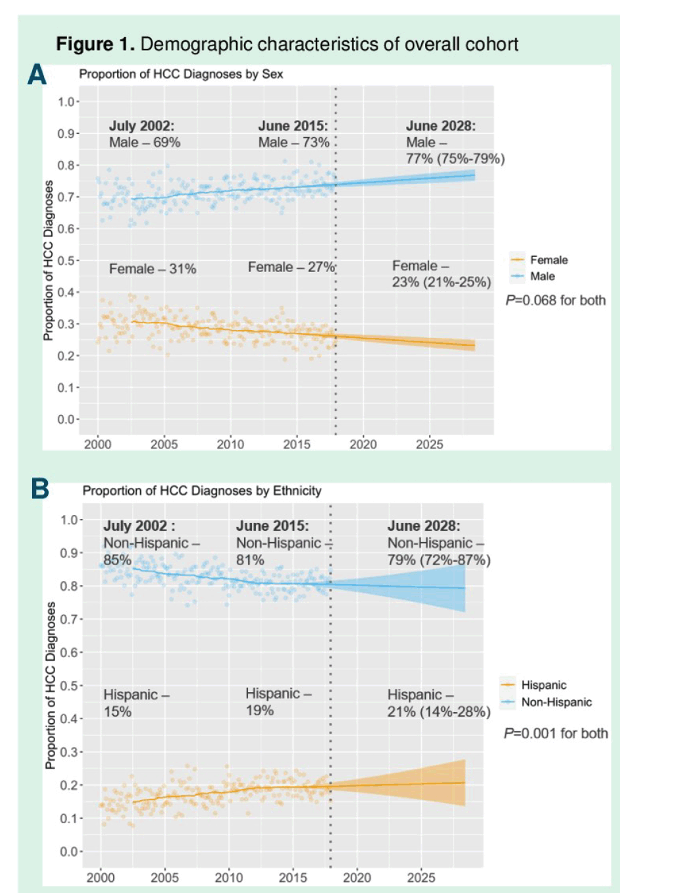
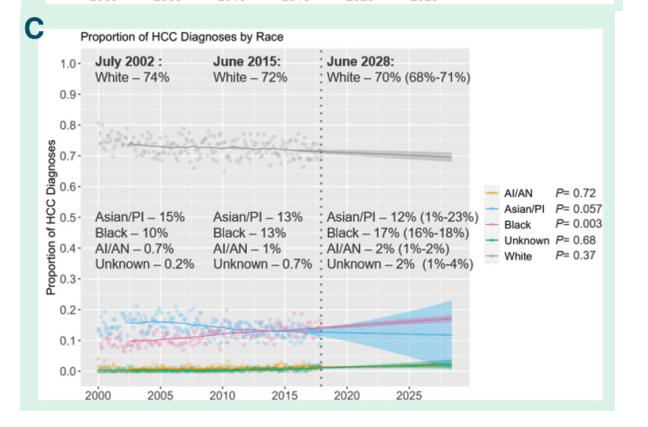
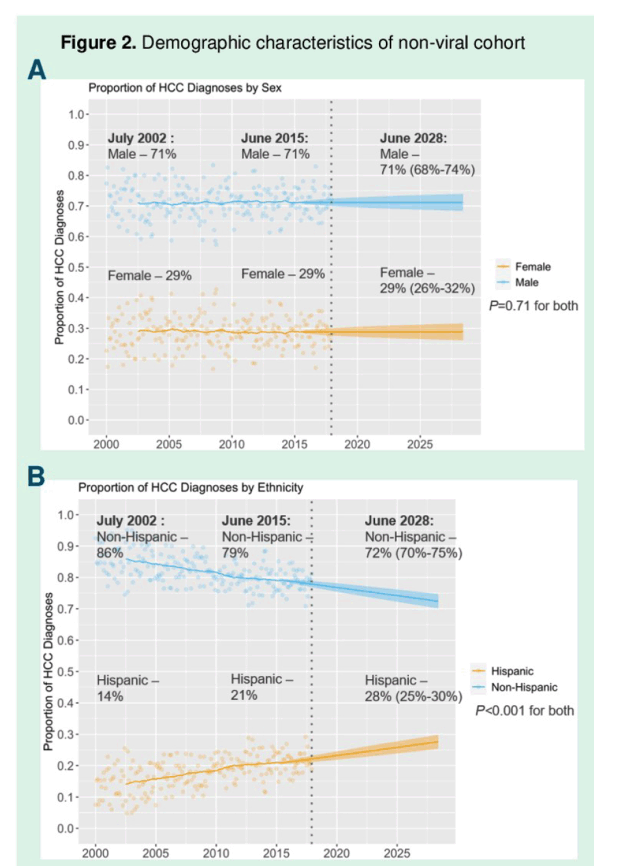
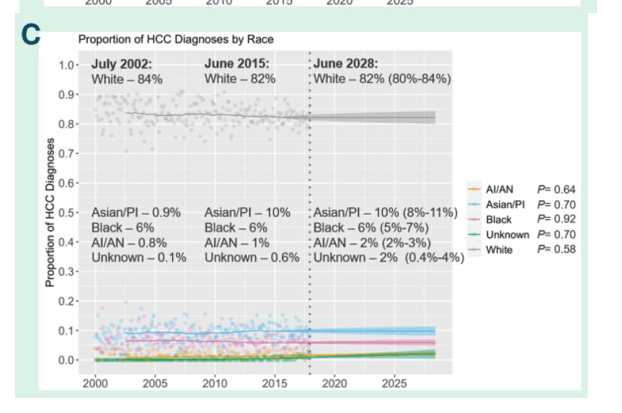
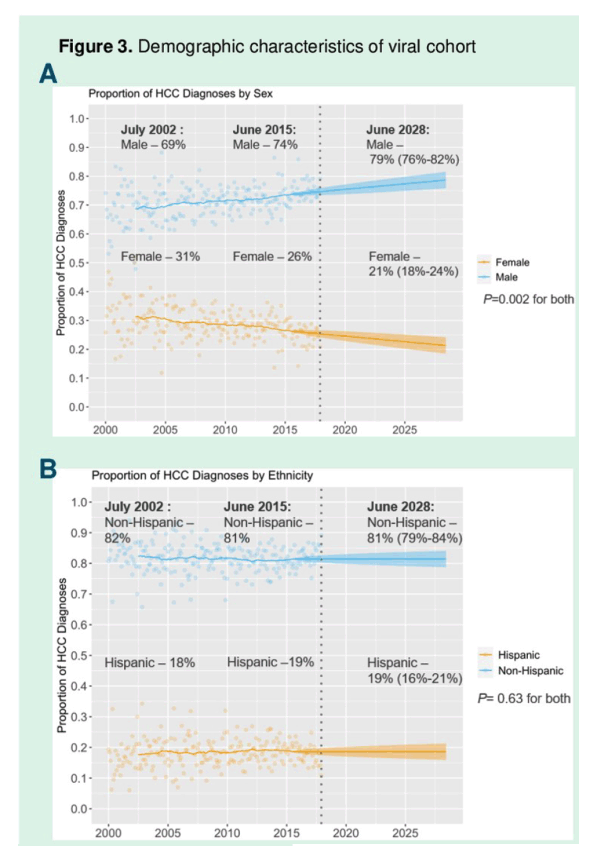
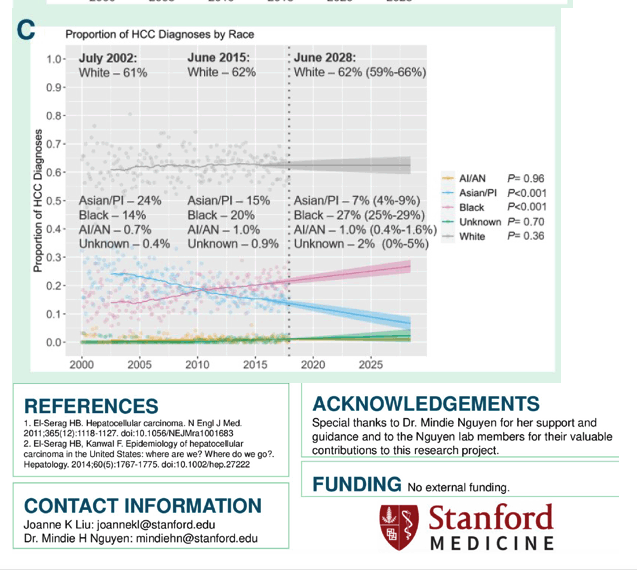
|
| |
|
 |
 |
|
|